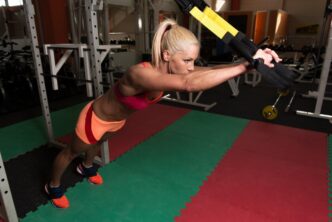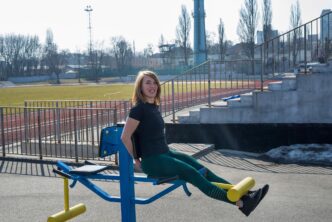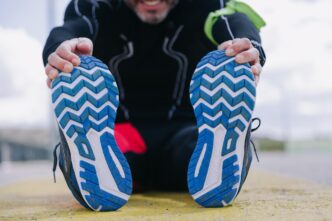For anyone looking to build strength and improve their fitness without a gym membership, the solution may be hiding in plain sight. A killer home workout can be built using common household furniture, transforming items like chairs, sofas, and even walls into versatile pieces of exercise equipment. This approach allows individuals of any fitness level to perform a full-body workout conveniently and cost-effectively from the comfort of their own home. The core principle is leveraging bodyweight and gravity, using furniture to modify angles, increase range of motion, and challenge stability, proving that an effective fitness routine is more about resourcefulness and consistency than expensive gear.
Why Furniture Workouts Are So Effective
The concept of using your environment for exercise is not new, but its value has become increasingly clear. Bodyweight training is the foundation, and furniture simply provides the tools to take it to the next level.
By using a chair for incline push-ups, you make the exercise more accessible for a beginner. By elevating your feet on that same chair for decline push-ups, you make the movement significantly more challenging for an advanced athlete. This inherent scalability is what makes furniture workouts so powerful.
Beyond versatility, the benefits are practical. There are no monthly fees, no travel time to a gym, and no need to buy bulky equipment that takes up space. This removes common barriers to exercise, making it easier to build a sustainable and consistent habit. You can fit in a workout whenever you have a spare 20 minutes, whether it’s in the morning, during a lunch break, or while watching TV in the evening.
Safety First: Choosing Your “Equipment” and Preparing Your Space
Before you jump into your first set of sofa squats, safety must be your top priority. Not all furniture is created equal, and using an unstable piece of equipment is a recipe for injury. Take a moment to assess your environment.
Assess Stability and Sturdiness
The most critical step is to ensure your chosen furniture is stable. A dining chair is often a better choice than an office chair with wheels. Push on the item from various angles. Does it wobble or slide easily? If so, find a different piece. A heavy, solid sofa, a sturdy dining table, or a well-built armchair are excellent candidates. Avoid anything that feels flimsy, rickety, or overly light.
Consider the Surface and Height
The height of a surface directly impacts the difficulty of many exercises. For example, placing your hands on a high countertop for a push-up is much easier than using a low coffee table. Use this to your advantage by choosing heights that match your current fitness level. Also, consider the surface material. A slippery, lacquered stool could cause your hands or feet to lose grip. Place a yoga mat or towel over the surface to improve traction if needed.
Clear Your Workout Zone
Create a clear, open space around your chosen piece of furniture. Move any clutter, rugs, or objects you could trip over. You need enough room to perform each movement with a full range of motion without bumping into a wall or another piece of furniture. A safe workout environment is a prerequisite for an effective one.
The Ultimate Furniture Workout Routine
Here’s how to turn your living room into a functional gym. These exercises target all major muscle groups, using different pieces of furniture to maximize their effectiveness.
The Chair: Your All-in-One Fitness Station
A sturdy dining chair or bench is arguably the most versatile piece of home gym equipment you can find. It’s perfect for targeting both the upper and lower body.
Bulgarian Split Squats: This single-leg squat variation is phenomenal for building your quads, glutes, and hamstrings while seriously challenging your balance. Stand a few feet in front of the chair and place the top of one foot on the seat behind you. Keeping your torso upright, lower your body until your front thigh is parallel to the floor, then drive back up through your front heel. Complete all reps on one side before switching.
Triceps Dips: Sit on the edge of the chair and place your hands on the seat next to your hips, with your fingers pointing forward. Slide your hips off the chair and walk your feet out. To make it easier, keep your knees bent; to make it harder, straighten your legs. Lower your body by bending your elbows until they are at a 90-degree angle, then press back up to the starting position. This is one of the best exercises for targeting the back of your arms.
Incline and Decline Push-Ups: The chair allows you to modify the classic push-up. For an incline push-up (easier), place your hands on the seat of the chair and your feet on the floor. For a decline push-up (harder), place your feet on the chair and your hands on the floor. Both variations challenge your chest, shoulders, and core.
The Sofa: More Than Just for Lounging
Your couch or sofa, typically a symbol of relaxation, can become a powerful tool for lower-body and core exercises thanks to its sturdiness and comfortable surface.
Elevated Glute Bridges: Lie on your back on the floor with your heels on the edge of the sofa cushion. Drive your heels into the couch and lift your hips toward the ceiling, squeezing your glutes at the top. The elevation increases the range of motion, leading to greater muscle activation than a standard glute bridge.
Couch-Assisted Pistol Squats: The pistol squat (a one-legged squat) is an advanced move. You can use the sofa to learn the movement. Stand on one leg in front of the couch and lower yourself slowly until you are gently sitting on the cushion. Without using your hands, drive through your heel to stand back up. The couch provides a safe endpoint and helps you build the necessary strength and control.
The Wall: A Foundation for Stability
A simple, flat wall is an incredible tool for isometric exercises, which build strength and endurance by holding a static position.
Wall Sits: This is a classic quad-burner. Stand with your back against a wall and slide down until your thighs are parallel to the floor, as if you’re sitting in an invisible chair. Ensure your knees are directly above your ankles. Hold this position for 30-60 seconds, keeping your core engaged and your back flat against the wall.
Wall Push-Ups: For those new to fitness, the wall push-up is the perfect starting point. Stand facing a wall, about arm’s length away. Place your hands on the wall slightly wider than your shoulders. Lean in, bending your elbows until your nose nearly touches the wall, then push back to the start. It builds foundational chest and shoulder strength with minimal strain.
Putting It All Together: Sample Workouts
Knowing the exercises is one thing; combining them into a cohesive workout is another. Here are a few sample circuits you can try.
Full-Body Strength Circuit
Perform each exercise for 45 seconds, followed by 15 seconds of rest. Complete the entire circuit 3 to 4 times.
- Chair Bulgarian Split Squats (Right Leg)
- Incline Push-Ups (Hands on Chair or Sofa)
- Chair Bulgarian Split Squats (Left Leg)
- Sofa-Elevated Glute Bridges
- Chair Triceps Dips
- Wall Sit
Lower-Body and Glute Focus
Perform 3 sets of 12-15 repetitions for each exercise. Rest for 60 seconds between sets.
- Chair Step-Ups (12 reps per leg)
- Bulgarian Split Squats (12 reps per leg)
- Sofa-Elevated Glute Bridges (15 reps)
- Wall Sit (Hold for 60 seconds)
How to Keep Progressing
To continue building strength and fitness, you need to challenge your body. This principle, known as progressive overload, can be applied to furniture workouts just as it can in a gym.
Increase Time Under Tension (TUT): Don’t rush through your reps. Slow down the movement, especially the lowering (eccentric) phase. For example, take three full seconds to lower your body during a push-up or a dip. This increases the challenge on your muscles without adding any weight.
Decrease Rest Time: Shorten the rest periods between your sets or exercises. Turning a strength workout into a circuit with minimal rest will also boost your cardiovascular endurance.
Change the Leverage: As you get stronger, make the exercises more difficult. Progress from wall push-ups to incline push-ups, and then to floor push-ups. Advance from a two-legged glute bridge to a single-leg version. This is the art of manipulating your bodyweight to create a greater challenge.
Your home is full of potential. By looking at your furniture through a fitness lens, you unlock a world of convenient, effective, and free workouts. The most important step is the first one—choosing a sturdy chair, clearing some space, and committing to a routine. Consistency, not complexity, is the true secret to building a healthy and sustainable lifestyle.








